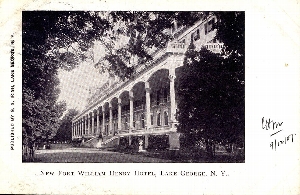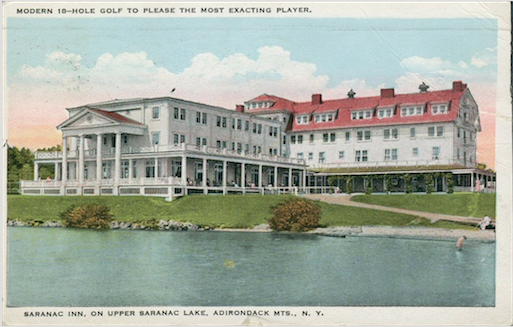Origins and Characteristics
Imagine the Parthenon in upstate New York. It is completely out of place, right? Well, kind of. The Parthenon imposing, grand, and maybe a little too much for a state park. However, architectural elements of the Parthenon and other ancient Greek structures have allowed builders to make regular houses, municipal buildings and hotels a little more imposing and grand. Even though a Parthenon, plopped in a town in the Adirondacks would seem completely ridiculous, we wouldn’t look twice at a house with the same corinthian columns facing the road. The closer we look at the architecture of houses built between approximately 1818 and 1850 the more elements of Greek architecture appear.
_______________________________________________________________________________________________________
Columns and Decorative Supports

Columns can take other forms. Pilasters, for example, are just columns in disguise. Pilasters do not stand alone like normal columns, but instead run up the corners of a structure vertically (Architectural Field Guide). The less imposing pilasters are sometimes misidentified as generic trim boards. Usually pilasters are decorative, and their only other purpose is to protect the more vulnerable ends of clapboards from weathering. Pilasters, usually made of wood but sometimes built directly into a stone structure, are often decorated with intricate carvings. Certain neighborhoods are sometimes known to have their own particular design because the local carpenters would have either built the neighbors house or looked at it, liked it, and copied it. Carpenters in the early 19th century did not just decide all of a sudden that their designs should mimic Greek temples. Instead, carpenters, architects and home builders mostly just copied what they saw going on around them (McGowan 38).
_______________________________________________________________________________________________________
Pediments

Another somewhat hidden but important part of a structure built in the Greek revival style is the pediment. Despite the heaviness of the word ‘pediment’, it is actually a part of the roof. A pediment is the triangular part of the wall whose top two sides are formed by the sloped edges of a roof (Architectural Field Guide). Pediments must have solidly defined bottom edges. If they do not, they are simply part of the gable. Pediments in Ancient Greece were heavily decorated (see the parthenon), usually with relief sculptures, but in Greek revival architecture in America the decoration of the pediments is reduced to a simple triangle, without any of the excessive decoration. Sometimes there is only a suggestion of a pediment, when the eaves extend only partway across the side of the house. Pediments, seemingly unimportant elements of a house, are significant because they affected larger changes in the structure houses. When the pediments of houses began to be emphasized, architects and carpenters started orienting houses with pediment side toward the road. This orientation necessitated a second, somewhat decorative door on the street side, usually placed asymmetrically on the face. The second door further interrupted tradition by rearranging traditional floor plans. The Saranac Inn on upper Saranac lake shows a very imposing pediment supported by columns, facing the lake instead of the road. (Tolles, 102). See postcard on right.
Why was Ancient Greek architecture so popular in the Adirondacks and America in the early nineteenth century? Robert McGowan suggests that the elements of Greek temples helped farms and cottages looks slightly more regal without too much expense. Since buildings in the Adirondacks are primarily farmhouses and cottages, Greek architecture had a particularly significant effect on the archicture in the park. Municipal buildings of importance used Greek architecture to draw respect for the order and law which they represent. No matter the reason, it is amazing that almost 2000 years after the height of Ancient Greek civilization, we are drawn back to the exact same forms for building our shelters.
_______________________________________________________________________________________________________
Sources:
"Architectural Field Guide." Architectural Field Guide. Pennsylvania Historical and Museum Commission, n.d. Web. 05 Apr. 2015.
"Greek Revival Architecture in Essex, New York." Essex on Lake Champlain. N.p., 14 Mar. 2013. Web. 05 Apr. 2015.
Howe, Jeffrey. "Greek Revival Architecture in America." Greek Revival Architecture in America. Boston College, 1998. Web. 05 Apr. 2015.
"Pilaster | Architecture." Encyclopedia Britannica Online. Encyclopedia Britannica, n.d. Web. 23 Feb. 2015.
Tolles, Bryant Franklin. Resort Hotels of the Adirondacks: The Architecture of a Summer Paradise, 1850-1950. Hanover, NH: U of New England, 2003. Print.
Image Sources:
Fort William Henry Hotel: Scanned postcard dated 1907, http://commons.wikimedia.org/wiki/File:FortWilliamHenryHotel.JPG
Saranac Inn: Photo by Donal Harrison, https://www.flickr.com/photos/upnorthmemories/16899602790/
_______________________________________________________________________________________________________

